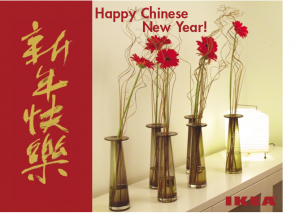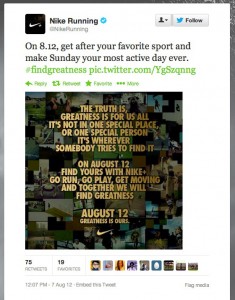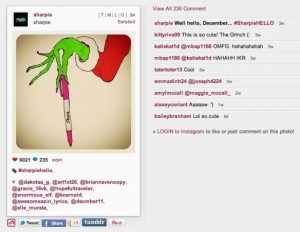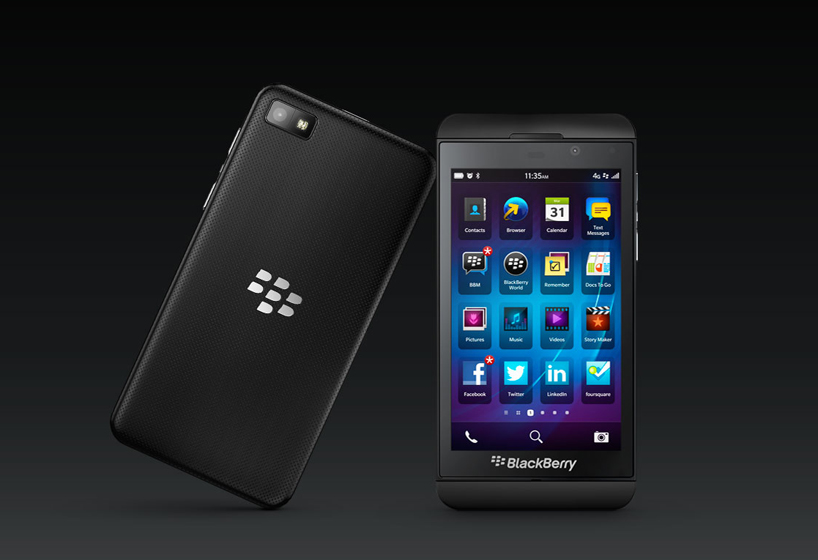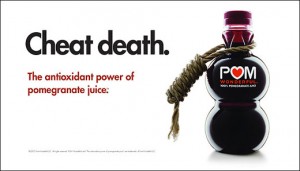One thing I’ve learned is the extraordinary ability marketers need to condense the endless amount of articles, data, and numbers available and turn it into useful information. For each of the marketing assignments, the biggest challenge I faced was compressing all the information to fit the limits that always seemed too little for everything we need to cover! It’s so hard to give up certain facts or statements when you feel like everything you’ve written or said is important. The writing came easy, but the hours spent editing and shortening our parts was truly the difficult part. With so much information available, updated almost daily, I also didn’t know which information to consider relevant. Is information from one month, one year, or two years still important to a retailer that is constantly updating its operations in response to economic and political changes? Definitely, a skill I learned was how to pick out the most important and relevant information.
One of the strengths of the assignment was that it made me really think about our company, A&F, and all their marketing tactics. It’s made me question all advertisement I see thinking “Am I decoding the message correctly” or “am I the target market the company is trying to reach?” There were a lot of new aspects of A&F that I learned about including their strong online presence and history as a hunting goods store. The project made me more aware of what is going on in marketing around me and realize why some companies are so successful in their marketing strategies.
To improve the video project we did hand in, I would have liked to elaborate further on our recommendations as due to time pressures of the video, we didn’t allocate enough time for it. I would also have liked to take the project one step further. I felt that we did a lot of research on our company, determining the target market, refining a positioning statement, and assessing the 4 marketing P’s, but we didn’t get to fully apply any of it. We got to make recommendations for the company but I would have liked to create an actual marketing campaign for A&F. This could be the creative portion of the assignment and then the assignment could be judged on how effective classmates or professors thought the ad was.
The teamwork was fun and I’d like to end off this blog for now to mark the end of Comm 296. Now time for finals!
I recently stumbled upon Diana Pan’s Blog where she wrote about IKEA Richmond’ s Chinese New Year celebration. Unfortunately, I didn’t visit IKEA on this day to witness the excitement first-hand. The use of promotions incorporated with Chinese traditions including prices being at $8.88 which is the luckiest combination of numbers in Chinese culture, demonstrates how IKEA is trying to create value for its customers. As we all know, Richmond has the largest population of Chinese immigrants, who would be the major demographic group for the Richmond IKEA. As a Vancouver-born Chinese, I appreciate how IKEA is trying to relate to the Chinese culture and share in our traditions at Chinese New Year, but I wouldn’t make any of these Chinese-inspired purchases because they are too Western. I believe that these promotions appeal most to people who are not Chinese because it exposes them to Chinese culture and things they are not used to.
I did some extra research on the topic to find that IKEA had spent a lot of effort incorporate Chinese offerings in their product line. This may not be at the Canada locations, but I found a short catalog celebrating Chinese New Year with Chinese inspired furniture along with brief descriptors of the meaning behind different items. As a Dutch company of Swedish origin, it is amazing to see how it has diversified in out to reach more customers. It shows how IKEA embraces the different cultures of its customers and recognizes the importance of being an international brand.
Another comment this blog post brought to mind is a recent article I read about signage in Richmond. As the population is mostly Chinese, there has consistently been debate about businesses having signage only in Chinese without any English. For me, there are ultimately two sides to this. First, it makes me think about how multicultural Canada in that we have a whole city that’s an actual like ‘Chinatown’ where it’s not a Westernized tourist attraction. Immigrants can come and live in Richmond, not have to know any English, and live as if they had never left their original country. In that way though, the other side is that with only Chinese signage, these Chinese people never need to be incorporated into Canadian culture. As much as preserving one’s own culture is important, it’s also important to be open to new ones as well. Also, there are more than just Chinese people living in Richmond, who sometimes may get upset that there are so many stores they cannot visit because there is no English. Part of being a Canadian for me is that I can experience any culture in Vancouver and feel welcome in it. As many others have been saying, yes, owners should have their own control over their business, but with time they need to realize how important having English on their signs is.
is that with only Chinese signage, these Chinese people never need to be incorporated into Canadian culture. As much as preserving one’s own culture is important, it’s also important to be open to new ones as well. Also, there are more than just Chinese people living in Richmond, who sometimes may get upset that there are so many stores they cannot visit because there is no English. Part of being a Canadian for me is that I can experience any culture in Vancouver and feel welcome in it. As many others have been saying, yes, owners should have their own control over their business, but with time they need to realize how important having English on their signs is.
Times are changing and the online advertising industry is taking over as in 2012 spending costs for online ads in the US equaled to $38 billion. But as a consumer, online ads are the ones I rarely notice at all. For myself, my eyes are adjusted to avoid the sides of my browser knowing that there will just be boring ads trying to sell unwanted products at deep discounts. If these ads don’t actually attract customers, why are they still there and why are companies investing so much money into them?
I discovered that those ads I don’t notice are the ones that are doing it wrong. In an article titled, “The best online ads of 2012 weren’t ads” I learned that the online ads that actually work are the ones that don’t actually sell anything but instead tell a story, engage and compel consumers. The best ones were the ones people wanted to share with their networks because they believed in the message behind them.
Some of the top contenders for best ads I liked included:
1. Nike “Most Active Day Ever”
Nike was able to sell a message of being active and coming together as a community to do it. They recognized that by promoting the importance of doing things to better yourself, consumers associate Nike as being a positive brand that is concerned about the consumers. By first promoting a lifestyle associated with their brand, the customers will soon follow and purchase products from Nike, which has become part of their evoked set.
2. Oreo “Daily Twist”
The Oreo is so recognizable by just its two cookies at the top and bottom, there wasn’t even a need to show consumers the Oreo logo. The ad is simple and fun, but carries depth in its message making it an ad that people want to share.
Not to mention, Oreo’s buzz worthy ad during the Superbowl through a viral tweet: “You can still dunk in the Dark.” Oreo, only one of the many brands under Nabisco, have dominated in the cookie/cracker industry by growing its product line through diversification.
3. Sharpie “Grap a Sharpie & Start Something”
I personally like this ad because it reminds us as consumers about what it was like to be kid, where imagination and creativity were at its height. It moves people to re-ignite that create side of them that often gets lost as we grow up.
Following the ethics post and lecture, I stumbled on this marketing blog post by Tom Cleeland that was motivated by a video by documentary maker Ken Burns. The post highlights an idea that you don’t realize at first until someone else has told you. The idea is that ‘manipulation is present in every story whether we like it or not’ which makes advertising in its purest form manipulation. Whether through social media, commercials, or posters, it’s easy to try to tell story and to craft an ‘emotional hook’. This gets the viewers engaged and moved, even sometimes to tears.
The question becomes if advertising is manipulation, when is this okay and when is it not? In Tom’s perspective, “manipulation is okay when it’s rooted in the fabric of the story we’re telling and not rooted in a sales pitch or promise.” He then elaborates on a commercial about a little boy waiting anxiously for Christmas to give his parents a present. The ending of the ad is touching and relatable to everyone who knows the joy and love that the Christmas spirit brings.
In my opinion, telling a story and influencing people to take action in a positive way is perfectly reasonable. But of course, like everything in life, there needs to be a balance.
A slightly different example I can think of is the ads run by the Canadian Cancer Society. As I volunteer with the organization, I was recently sifting through their ad campaigns on YouTube to pick out specific videos and found many that stood out for me.
The focus of many of their campaigns is to tell a story and find ways to connect and relate in viewers. In a way, the Society manipulates viewers to recall their own experiences and feel a sense of sympathy for those who suffer or relief that they are healthy. But the end result of these advertisements, the positive impact the organization makes on people’s lives, and the change they bring is more substantial than trying to make a sales pitch. I know the organization’s mission and values and therefore can trust their advertisements, but this may not hold true for other organizations.
After the initial launch of the new BlackBerry 10, the company still saw shares of Research in Motion Ltd., plunge even with positive reviews for the new smartphones. After resisting the trend of full touch-screen displays for so long, the company has jumped onto the bandwagon and is trying to compete with the giants of Apple and Samsung for a share in the market.
A bold move that was also announced by RIM was to change the company name from RIM to BlackBerry, with the ‘BBRY’ symbol on the stock exchange. I believe this was a good move for BlackBerry. The fact is, most people didn’t even know what Research in Motion was and didn’t know the connection with the BlackBerry brand.
On Sunday, for its first time, Blackberry launched a costly commercial during the Superbowl in an attempt to attract as many viewers as possible. The unusual ad features completely out of the ordinary incidents that happen for a Blackberry user, including growing elephant feet and a truck exploding into millions of rubber ducks! The ad then ends with an announcer mentioning “in 30 seconds it’s quicker to show what it can’t do.” According to the chief marketing officer here, they “wanted to let people know that Blackberry is back and that Blackberry 10 is worth checking out.” Personally, the ad didn’t resonate well with me as there was too much going on and I wasn’t intrigued. I would have preferred to actually learn about the features right away and be able to research more if I was interested, instead of having to look it all up myself. But if you want to, you can see more of its features here. Blackberry most likely paid a hefty cost for that ad, with estimates of $3.6 million to $4 million for Superbowl prime time so Blackberry better hope that it made others, if not myself, interested in checking out the Blackberry 10.
Take a look at the commercial below and tell me what you think!
The Blackberry Z10 was launched in Canada today, and according article in the Vancouver Sun, there has been a very positive response from customers. Albeit Blackberry could not entice customers to camp out overnight and wait in endless lines, as they have been willing to do for previous Apple products, sales have topped expectations and were even sold-out in some locations. Shares of BlackBerry have now been rising with Bernstein Research’s predictions at a $20-25 range for shares instead of its current value of $16.
Being the sole main Canadian telecommunication company, I hope that BlackBerry will be successful and regain its stance in the telecommunications market.
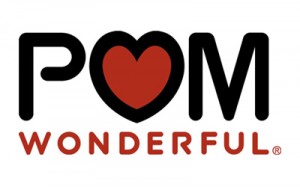 In recent news, the Federal Trade Commission (FTC) has upheld the decision that POM Wonderful has been using deceptive advertising in their marketing strategies. POM wonderful, whose products focus on the benefits of pomegranates, claimed that their product could help fight Alzheimer’s disease, arthritis and prostate cancer. POM supposedly spent $35 million in research to substantiate its health claims but the vigor and process did not meet FTC standards. After this two year long standing battle, they still reject the claims to misleading advertisements.
In recent news, the Federal Trade Commission (FTC) has upheld the decision that POM Wonderful has been using deceptive advertising in their marketing strategies. POM wonderful, whose products focus on the benefits of pomegranates, claimed that their product could help fight Alzheimer’s disease, arthritis and prostate cancer. POM supposedly spent $35 million in research to substantiate its health claims but the vigor and process did not meet FTC standards. After this two year long standing battle, they still reject the claims to misleading advertisements.
With the increase in health conscious individuals worried about rising rates of obesity and heart disease, it is easy for consumers to fall prey to misleading advertisements. The growing trend of products ‘high in antioxidants’ that help prevent cancer, maintain blood pressure or cholesterol levels, easily created the opportunity for companies, such as POM, to ride this wave.
The issue for customers becomes when is a company allowed to make any claims of health benefits? It was ruled in this case that POM could not make any health claims unless “scientists had performed two randomized human trials.” I question if this is even sufficient to make such broad health claims since inevitably, there are huge differences in people based on factors of age, weight, ethnicity, etc. On the flip slide, one can argue that instead these limitations imposed by the FTC are too expensive and time consuming for food manufacturers who want to promote their developments of their products. Where do we draw the line for what is acceptable? If no specific health claims can be made, a product that advertises ‘health-promoting characteristics’ does far less to attract individuals than one that “minimizes the risk of heart disease.” In my opinion, POM went too far to say that their products ‘cheat death’ and help fight against diseases. Their advertisement creates an impression where customers might think ‘I drank POM juice today instead of having my coffee, that means I don’t need to go exercise!’ People may not necessarily fully believe in these false ads, but needless to say it is often the easy way out in tricking ourselves in believing we are living healthy lifestyles. Ultimately, it is up to the customers to choose what they want to believe is reasonable.
http://www.redorbit.com/news/health/1112766103/ftc-supports-pom-false-advertising-claims-011713/
Welcome to UBC Blogs. This is your first post. Edit or delete it, then start blogging!



